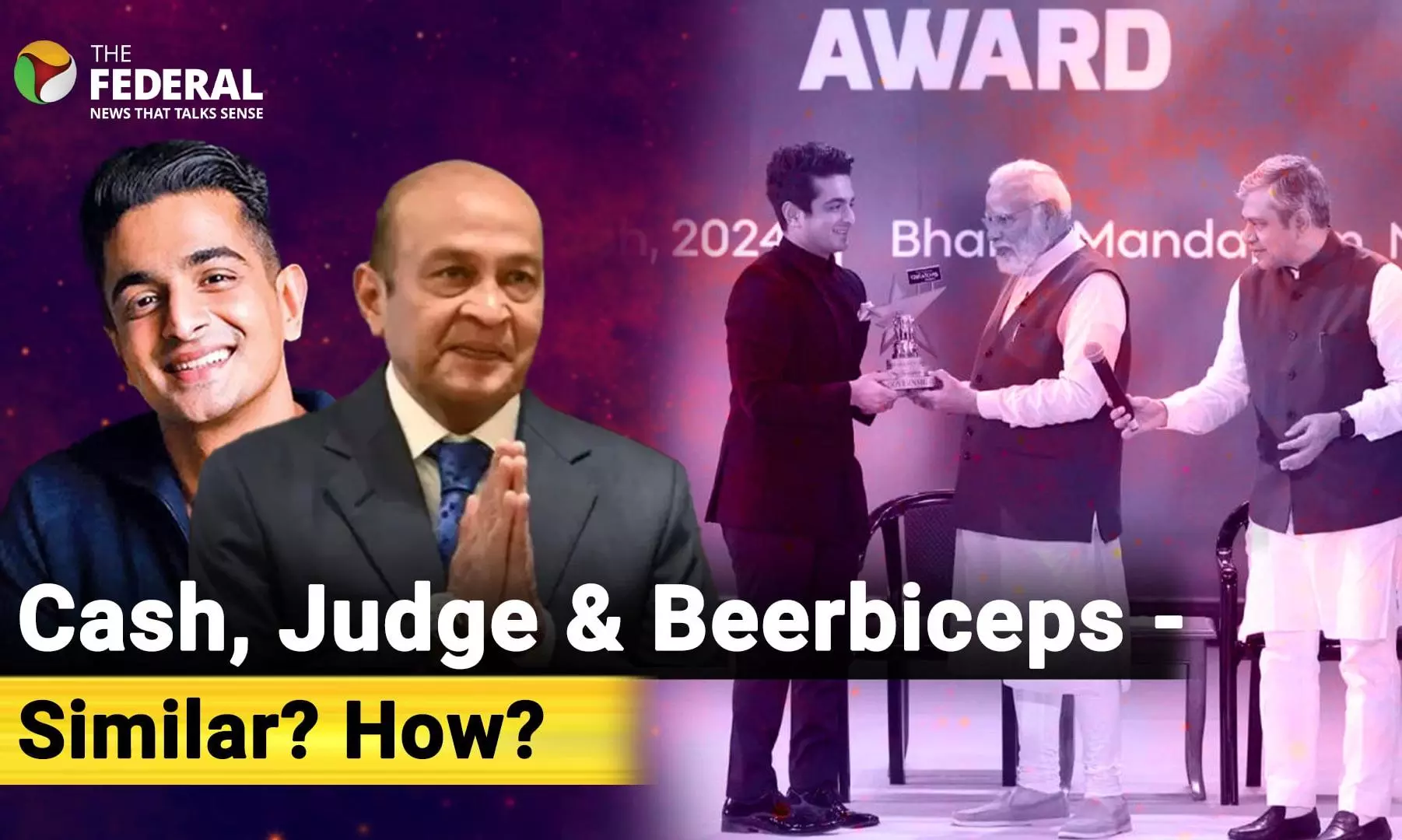
Justice Varma and Ranveer Allahbadia: How are the 2 cases similar?
The similarity could lie in the way the Modi government at the Centre used the cases to push its agenda. Sanket Upadhyay tells you how

A joke gone wrong by Ranveer Allahabadia, India’s prominent podcasting star, has not only triggered a nationwide uproar but also reignited the debate on regulating digital media. The controversy surrounding his remark has resulted in FIRs from Mumbai to Assam, drawing sharp reactions from former allies and the intervention of the Supreme Court.
The situation swiftly escalated from outrage to potential arrest, only halted by the apex court. However, the backlash may have paved the way for the government to revive its stalled attempts to control online creators under stricter regulations.
Fall for poster boy
Only months ago, Ranveer Allahabadia was celebrated as a model digital influencer. He had even received the Digital Creators Award from Prime Minister Narendra Modi. But after making what he believed was a joke, he faced criticism from both Union Ministers and right-wing supporters.
“Allahabadia would have been arrested for hurting sentiments… had it not been for the intervention of the Supreme Court,” the transcript reveals.
TV debates turned hostile, and support vanished almost overnight. Allahabadia, once hailed as a propaganda ally, was now being projected as a threat that needed taming.
Push for regulation
In the aftermath, the government reintroduced the narrative of regulating digital content creators. According to the transcript, initial proposals involved government registration and rigid compliance norms. Critics fear such rules would cripple small creators and independent voices.
“An argument was built around having a regulation around digital content all over again,” the narrator says, highlighting how the state is eyeing more control after years of pushback.
With traditional media already under influence, the decentralised and low-cost nature of digital platforms remains one of the last frontiers—one the government is keen to monitor.
Parallel with Justice Verma
The video draws a compelling parallel between Allahabadia's ordeal and another sensational case: the mysterious fire at Justice Verma’s residence. Burnt currency was found, and although details were initially vague, media speculation quickly turned accusatory.
Government-friendly news channels flooded the airwaves, reducing the word “allegedly” to near extinction. As suspicions grew, the Supreme Court took the unusual step of releasing visuals and set up a three-member committee to investigate.
The Chief Justice even recommended Justice Verma’s transfer and barred him from judicial duties. Justice Verma, however, denied the money was his, stating it was discovered in an unlocked outhouse.
Enter NJAC discourse
Following intense media coverage, Vice President Jagdeep Dhankar called for discussions on reviving the National Judicial Appointments Commission (NJAC), a controversial mechanism rejected earlier by the judiciary.
The NJAC would replace the collegium system—where judges appoint other judges—with a body involving political oversight. “Justice Verma’s case has provided a fertile opportunity for politicians,” the transcript notes.
“This brouhaha and media plans are the beginning of an effort to bring back something like the NJAC with complete government control," said TMC MP Mahua Moitra.
Is there a pattern?
As the dust settles on these high-profile events, a pattern emerges. Individual controversies—whether from a podcast joke or a fire incident—are being leveraged to push broader regulatory and political agendas.
“Ranveer Allahabadia and Justice Verma find each other to be neighbours,” Upadhyay concludes, linking two seemingly unrelated events into a wider narrative about control, compliance, and the shrinking space for independent voices in India.
The content above has been generated using a fine-tuned AI model. To ensure accuracy, quality, and editorial integrity, we employ a Human-In-The-Loop (HITL) process. While AI assists in creating the initial draft, our experienced editorial team carefully reviews, edits, and refines the content before publication. At The Federal, we combine the efficiency of AI with the expertise of human editors to deliver reliable and insightful journalism.

